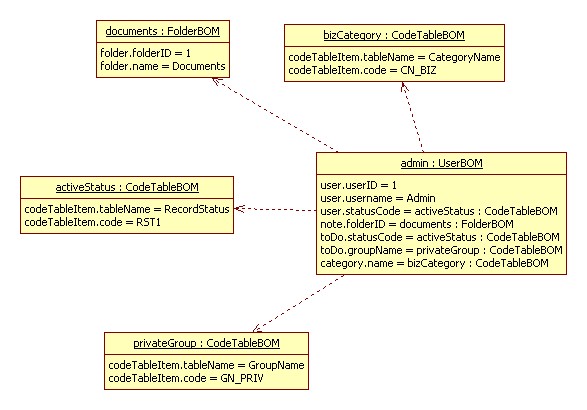Consider a user Business Object instance 'Admin/1', with the following contents:
User(1, 'Admin', 'Admin', 'RST1') Category(1, 'CN_BIZ', 'Category denoting mail items') ToDo(1, 'Approve mails', '2011-11-11', '2011-12-12', 1, '45', 'RST1', 'GN_PRIV') UserToDoLink(1, 1, 1) Note(1, 'Send follow up mail', 'Send follow up mail', 1, 'RST1') UserNoteLink(1, 1, 1)
After examining the data in each attribute, it is obvious that there are relationships with CodeTable and Folder Business Objects. These are listed in the following table:
Attribute Name |
Attribute Value |
Dependent Business Object Type/Identifier |
|---|---|---|
User.statusCode |
RST1 |
CodeTable/RecordStatus |
Category.name |
CN_BIZ |
CodeTable/CategoryName |
ToDo.statusCode |
RST1 |
CodeTable/RecordStatus |
ToDo.groupName |
GN_PRIV |
CodeTable/GroupName |
Note.folderID |
1 |
Folder/1 |
The equivalent UML representation is shown in the following diagram.
Figure 1. Instance-level relationships for User BOM